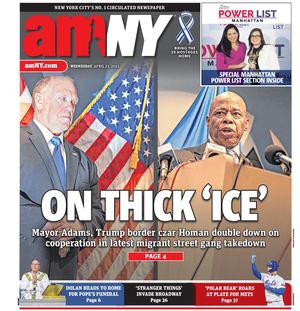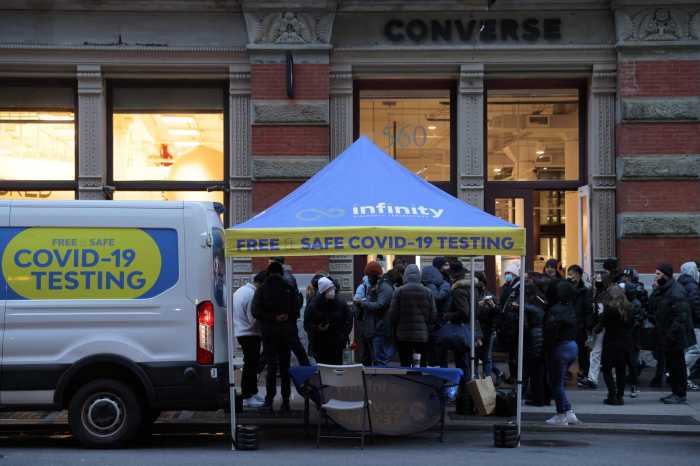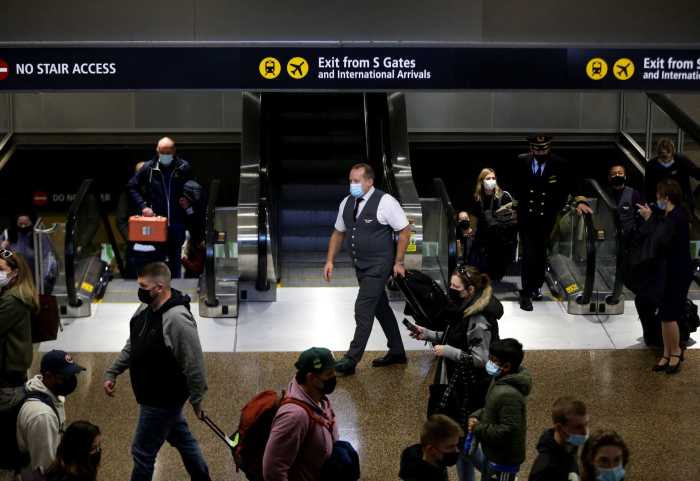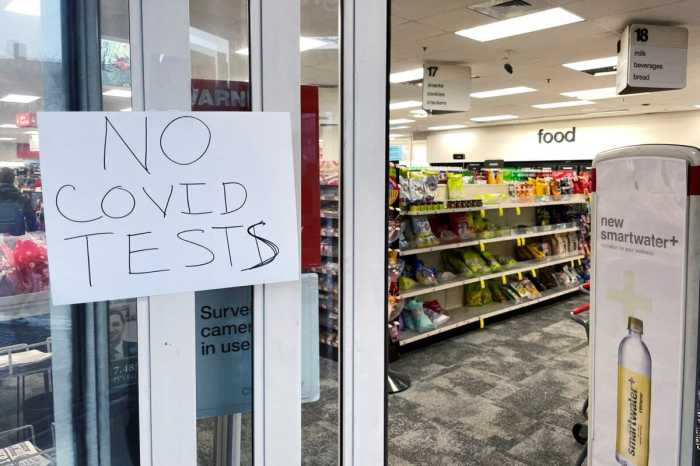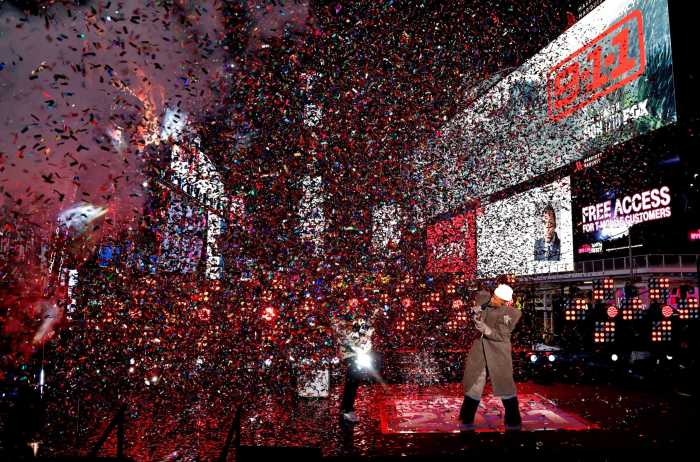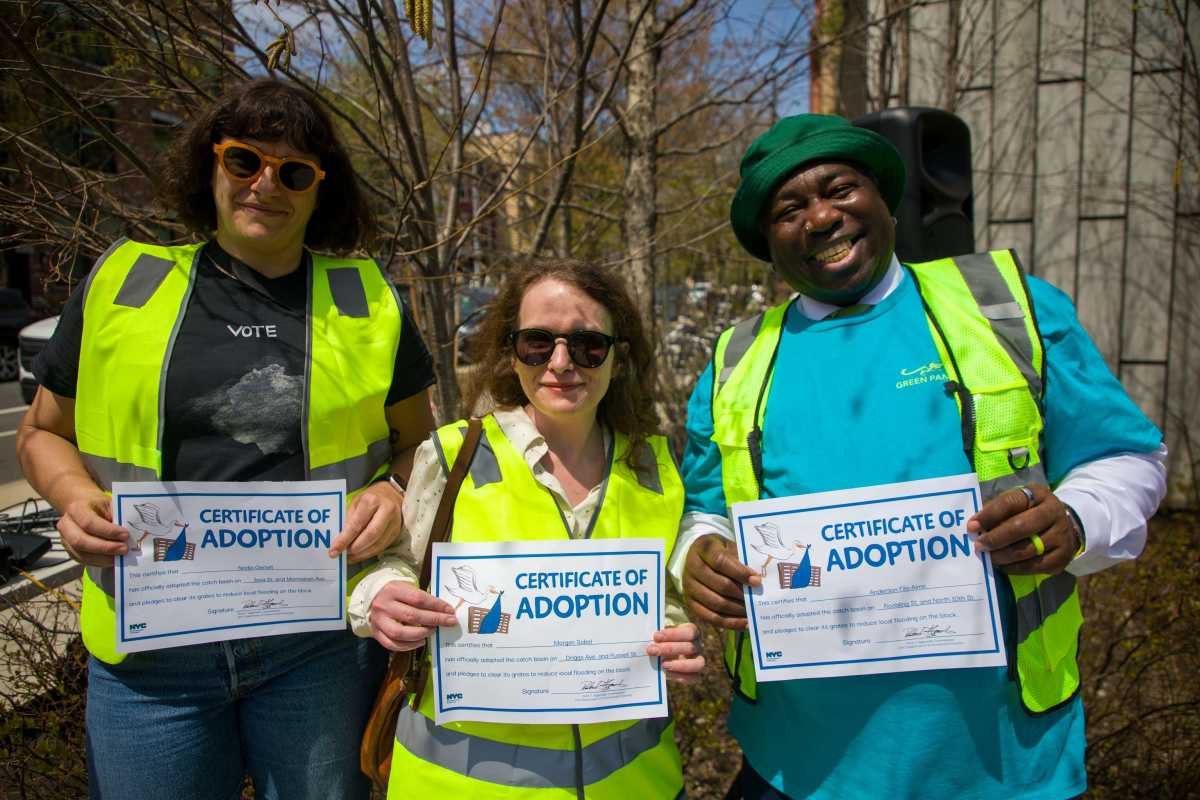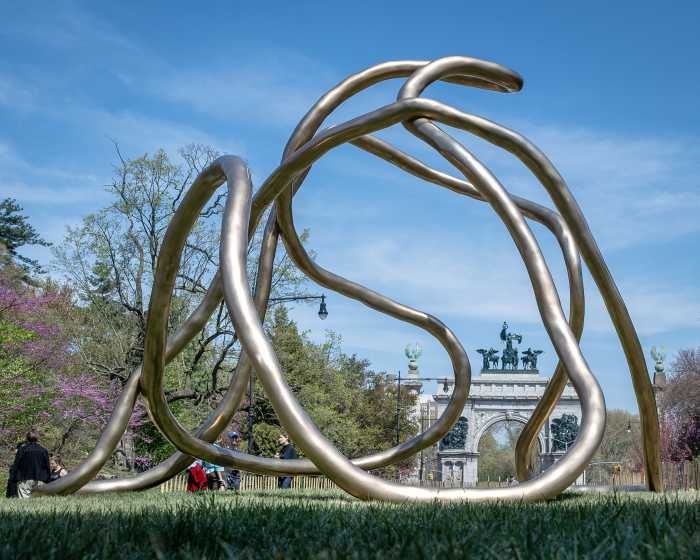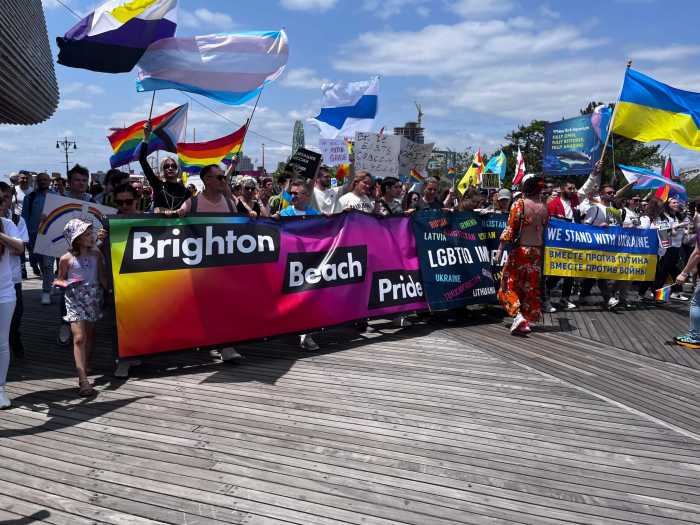The BA.2 subvariant of the highly-infectious Omicron version of COVID-19 is making the rounds through New York City, but even as cases tick upward, the rate of spread, hospitalizations and deaths remain very low.
Health Department officials said on March 18 that BA.2 accounts for more than 30% of all new COVID-19 cases diagnosed in the Five Boroughs, and the latest data does indicate increasing numbers of infections in recent days.
The daily average of confirmed cases over a 7-day period, as of March 20, was 610, up from the weekly average number of 492 reported a week earlier on March 13. The citywide 7-day positivity rate also increased from 1.31% on March 13 to 1.6% on March 20.
Even so, the daily number of hospitalizations dropped from 16 to 13 in the same week, while the number of confirmed deaths fell from 7 to 6.
Transmission levels also increased slightly over the past week, from 47 cases per 100,000 residents on March 13 to 59.77 cases per 100,000 people on March 20. The citywide transmission rate is hovering just below what’s considered a very “high” level.
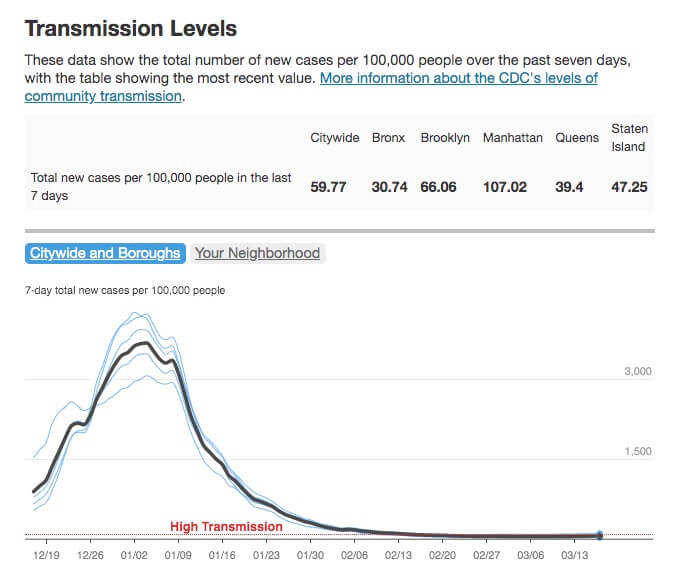
The BA.2 Omicron subvariant is believed to be more infectious than standard Omicron, which by itself was far more transmissible than classic COVID-19. The Omicron variant triggered a dramatic spike in cases across New York City around the holiday season, but has been in sharp decline since early January of this year.
At a press briefing on March 18, new city Health Commissioner Dr. Ashwin Vasan said the agency is closely monitoring the new variant, but noted that it does not seem to cause more serious illness than standard Omicron or COVID.
Meanwhile, just one New York City neighborhood registered a 7-day COVID-19 positivity rate above 5% between March 11-17; Tribeca in Manhattan (ZIP code 10007) saw positivity rates soar to 6.4%, but it only had 16 new cases reported during the period.
Four other neighborhoods had positivity rates of 4% or higher, three of them in Manhattan: Alphabet City/East Village (10009, 4.31%, 71 new cases); Upper East Side/Yorkville (10128, 4.31%, 70 new cases); and Battery Park City (10280, 4%, 12 new cases). The other community with rates above 4% was Brooklyn’s Clinton Hill/Prospect Heights (11238, 4.78%, 93 new cases).
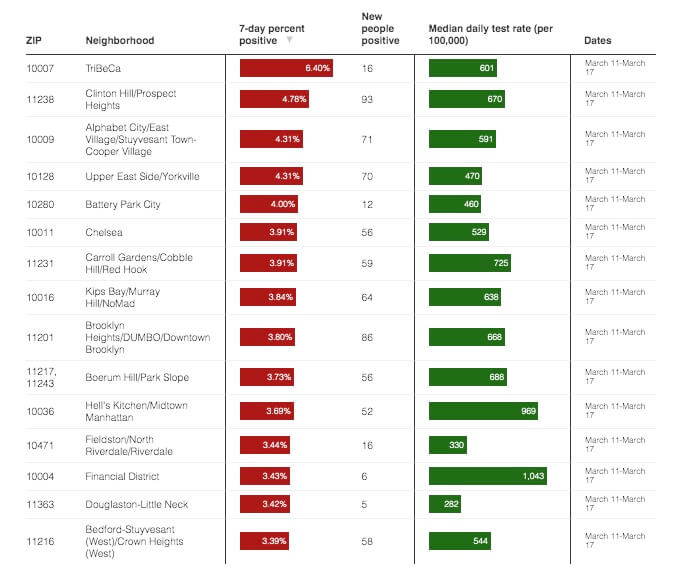
Clinton Hill/Prospect Heights had the second-most new infections between March 11-17, behind just East Williamsburg/Williamsburg, Brooklyn (11211), which tallied 98 new COVID-19 cases and a 2.19% 7-day positivity rate.
Two other communities had more than 80 new COVID-19 infections during the week: Manhattan Valley/Morningside Heights/Upper West Side (10025, 89 cases, 2.6% positivity rate) and Brooklyn Heights/DUMBO/Downtown Brooklyn (11201, 86 new cases, 3.8% positivity).
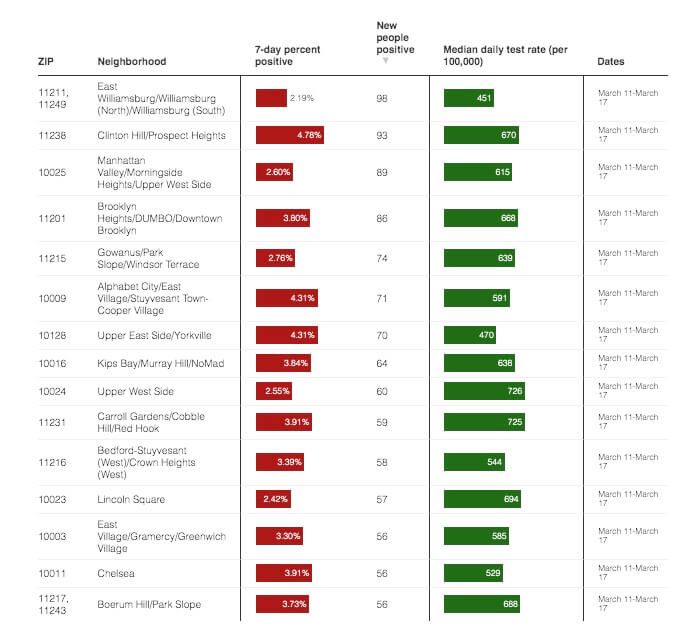
Only one neighborhood in New York City — the Bronx’s City Island — recorded no new COVID-19 cases between March 11-17. Five areas had just one: Battery Park City, Manhattan (10282); Hunts Point, Bronx (10474); Douglaston-Little Neck, Queens (11362); South Jamaica/South Ozone Park, Queens (11436); and Breezy Point, Queens (11697).
The COVID-19 vaccine and booster have proven effective at reducing the severity of symptoms, or preventing infection entirely. More than 77.4% of all New Yorkers are fully vaccinated, but just 36.1% have received an additional dose.
Unvaccinated New Yorkers continue to be at least five times more likely to contract COVID-19 than vaccinated residents.
“It’s essential that New Yorkers go and get boosted when they’re eligible,” Dr. Vasan said Friday.
With reporting by Isabel Song Beer
